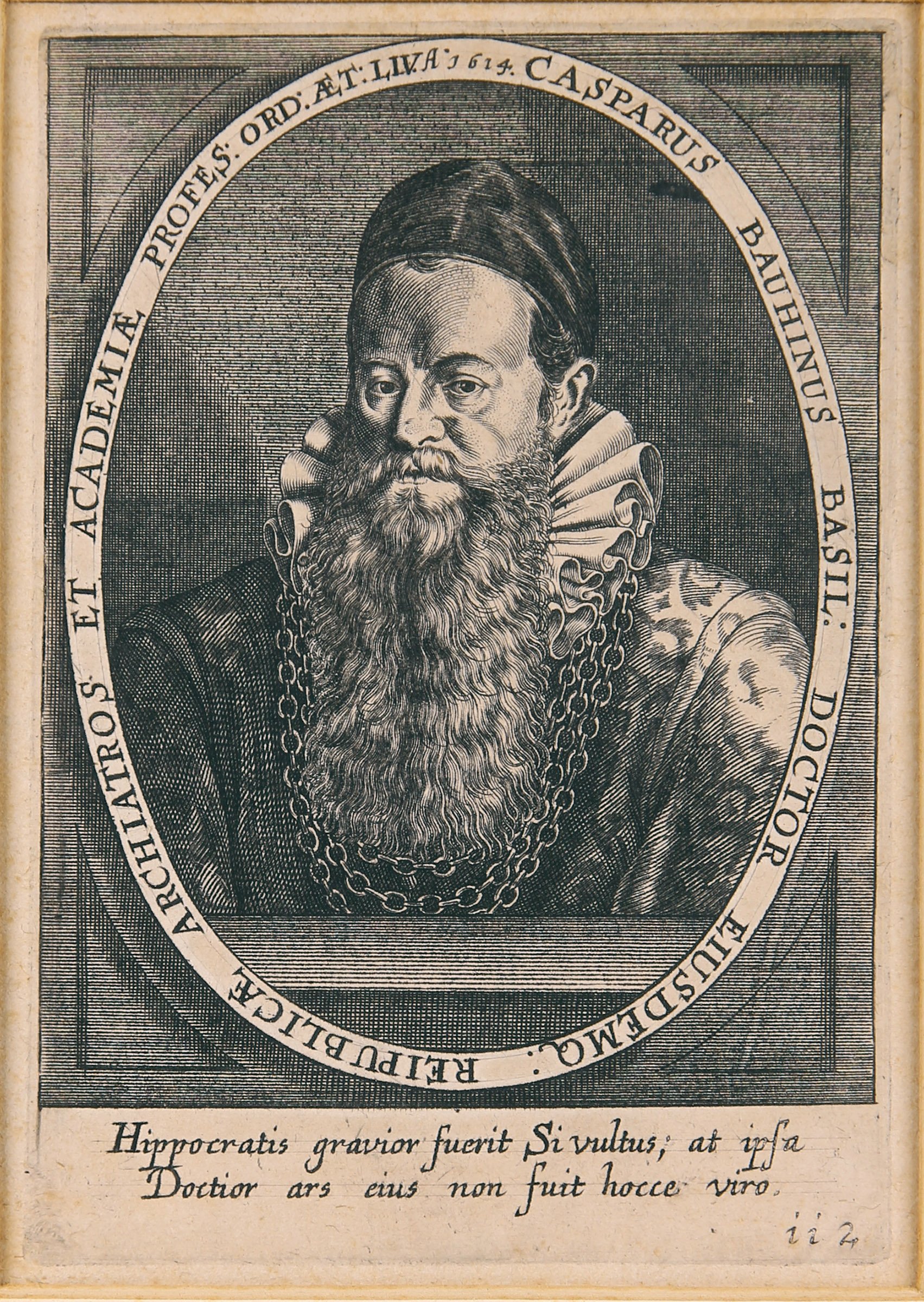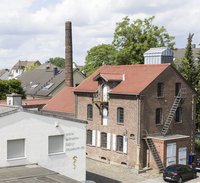Caspar Bauhin (Caspar Bauhinus) oder Gaspard Bauhin (* 17. Januar 1560 in Basel; † 5. Dezember 1624) war ein Schweizer Botaniker und Universitätsprofessor der Anatomie in Basel, der zahlreiche Schriften und Bücher verfasste. Wilhelm Fabry betrachtete ihn als seinen Lehrmeister und stand mit ihm im Briefwechsel. Das Brustbild wird von einem Schriftoval umrahmt, mit der Beschreibung "aet. LIV 1614 Casparus Bauhinus Basil. Doctor eiusdemq. Republicae Archiatros et Academiae Profes ord."
(Im Alter von 54 Jahren, 1614, Caspar Bauhin zu Basel, Arzt und zugleich Archiater der Stadt und ordentlicher Professor der Academie).
Das Porträt zeigt Bauhin mit Robe , Amtskette und Spitzenkragen. Die Widmung unter dem Bild lautet "Hippocrates gravior fuerit si vultus, at ipsa Doctor ars eius non fuit hocce viro" (sinngemäß: Hippokrates war bedeutender als dieses Antlitz, aber in seiner Kunst selbst war er ohnegleichen)
en

